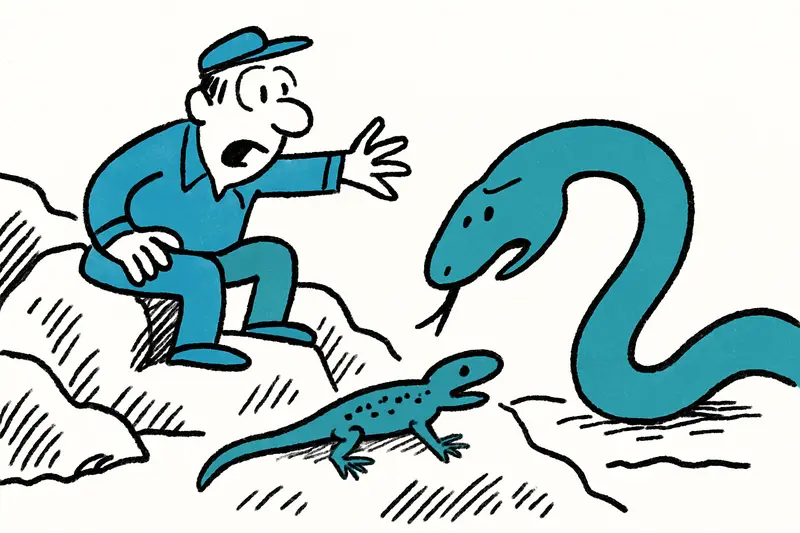Fishermen and conservationists are sounding the alarm: On the rocks off Santa Ponça, introduced snakes are swimming ashore and decimating an almost extinct lizard subspecies.
Dangerous Visitors on the Rocks Off Santa Ponça
Early in the morning, when the sun is just rising over Santa Ponça Bay and the boats are still rocking at the jetty, locals notice something out of place: snakes crawling ashore on the tiny Malgrats islets. For several weeks, fishermen and recreational skippers have been reporting individual ladder snakes and horseshoe snakes that apparently arrived from the mainland and are now roaming the rocks.
A Threatened Lizard Is at Stake
The affected are not ordinary lizards: this is the small, locally occurring subspecies Podarcis lilfordi hartmanni, popularly known as the Sargantana. On Illot dels Conills, one of the smaller islets, it is suspected that the population has already disappeared. A worker from a local conservation group told me this yesterday over coffee at the harbor — he looked visibly shaken.
The Sargantana is delicate, often hardly bigger than a hand, and has adapted for decades to the barren life on the islets. Against a predatory snake, it has little chance.
How Did the Reptiles End Up Here?
Locals suspect that the snakes arrived in hollowed olive trunks or in cargo on board — a classic case of unintentional introduction. A fisherman told me he had seen remnants of bark and traces on a boat; others recount nights when “something slid in the dark.”
The environmental organization GOB is now calling for targeted measures: more checks at docking points, traps on the islets, and regular population surveys. Meanwhile, there is discussion about whether short-term capture operations or even temporary exclusion zones are necessary to prevent further losses.
Why This Should Concern Us
It is not just about a small lizard, but about a fragile ecosystem. Such island populations are genetically particularly valuable and serve as a living memory of the island world — by the way, the subspecies was named after the German biologist Max Hartmann, who described the animal almost a century ago.
If you will be at the boat ramps near Santa Ponça in the coming weeks: keep your eyes open, report anything unusual to the municipality or to conservation groups. And yes, it sounds more dramatic than a hot July day, but for the Sargantana it is crucial now whether we act or just watch.
Site visit, rumors, checks: the coming weeks will show whether the Sargantana still has a future on the Malgrats.
Similar News

Die Zeit auf Mallorca: Warum die Uhren hier anders ticken
Auf Mallorca läuft die Uhr offiziell anders als die Sonne — ein Erbe aus den 1940er-Jahren, das bis heute unseren Alltag...

Orange Weather Warning for Mallorca: Heavy Rain and Thunderstorms Set the Week
Aemet warns: Monday and Tuesday on Mallorca are under orange alert. Heavy rain, floods, and traffic disruptions are poss...

Life-threatening swimming accident in Ibiza: 73-year-old revived on the beach
During severe storms, a 73-year-old visitor swam despite a red flag. Lifeguards rescued her, and she is now seriously in...

Mummified Body Found in Abandoned House Near Santa Margalida
Between Can Picafort and Son Serra de Marina, teenagers discovered a mummified corpse in an abandoned house. Identity an...

Large Rockfall Blocks Ma-2141 Road Near Sa Calobra
After heavy rainfall, several rock blocks toppled onto the winding Ma-2141 toward Sa Calobra over the weekend. The road ...
